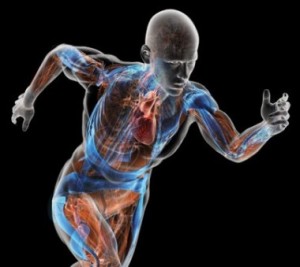Tags
benefits to closed chain kenitic exercise, benefits to open closed kinetic chain exercises, kinetic chain, open kinetic vs closed kinetic chain exercises
Kinetic = Force
Chain = A system that is linked together
I used to run with a woman who complained of pain radiating down the back of her leg. She laid out the symptoms for me and was interested in my opinion. Immediately my mind went to disc or muscle related issues. However, I replied that what she could have been experiencing was “referred” pain meaning that her discomfort could be felt in one area of the body but the source of that pain could stem from a completely different area. To give her an example, I explained that I had been experiencing pain in my elbow which stemmed from a wrist issue. I then suggested her distress could be one of a number of possibilities. Perhaps it was disc related, a degenerative spine condition, sacroiliac joint dysfunction or arthritis. Maybe her piriformis muscle, which sits in the glutes and crosses paths with the sciatic nerve, was the source of pain.
A different personal trainer concluded she had tight hips and prescribed hip flexor stretches. I encouraged her to get a diagnosis from a doctor so that a proper treatment protocol could be implemented. After several months of pain, she finally visited the doctor. Through an MRI, a herniated disc was diagnosed. Her situation was a good example that when one part of the body does not work properly it has the ability to throw off other parts of the body.
THE KINETIC CHAIN
The human body is a complex and interconnected system. It is an amazing structure of moving parts that employs the muscular (muscles, tendons, ligaments and fascia), nervous (central and peripheral nerves) and articular (joints) systems. The muscular, nervous and articular systems work together as a chain in order to create motion (force). These three systems are referred to as the Kinetic chain.
OPEN AND CLOSED KINETIC EXERCISES
Exercises are classified as either open or closed kinetic chain movements and performing one over the other may have advantages depending on the type of injury or your fitness goals.
An open kinetic chain (OKC) exercise or movement pattern is where the distal aspect (segment furthest away from the center of the body) of the extremity is not fixed to an object and terminates free in space.[1] This is an exercise or movement pattern where your hands or feet are allowed to move freely. These exercises are typically isolated movements. Examples of these types of exercises are: bench press, lat pull down, bicep curl, seated leg extension, and seated hamstring curl.
A closed Kinetic chain (CKC) exercise or activity is where the distal aspect (segment furthest away from the center of the body) meets “considerable” external resistance and restrains free movement. [2] This is an exercise where your hands or feet are fixed to a surface or resistance. These exercises are typically multiple joint movements. Closed chain exercises are thought to be functional exercises that often resemble everyday activities. Examples of these types of exercises are: squats, lunges, and push-ups.
BENEFITS OF OPEN AND CLOSED KINETIC EXERCISES
Some of the benefits of OKC exercise include: they are advantageous for many sports that incorporate open chain upper body movements (ex: throwing a ball), have the ability to improve strength deficits at isolated muscle or joints especially at the beginning of rehabilitation where CKC movements are not possible, and have a greater ability to improve range of motion (ROM) at a particular joint.
Some of the benefits of CKC exercise include: they mimic everyday activities making it easier to perform those activities, can reduce shear force due to the co-contraction of muscles, increases joint stability, and stimulates proprioceptors (sensory receptors in the muscles and tendons that send signals to the brain about changes in the muscle length and the speed at which changes are occurring).
I was taught that clients should move from open to closed kinetic exercises as fitness improves. As time has passed, I have learned that, while closed chain exercises have shown to be slightly more beneficial for rehabilitation and fitness goals, integrating both types of exercises have benefits.
For more information and studies conducted on this subject, please read:
Kinetic Chain Rehabilitation: A Theoretical Framework
Open vs. Closed Chain Exercises
A Kinetic Chain Approach for Shoulder Rehabilitation
Evaluation of Open and Closed Kinetic Chain Exercises in Rehabilitation Following Anterior Cruciate Ligament Reconstruction
[1], [2] Ellenbecker TS, Davies GJ. Closed kinetic chain exercise: a comprehensive guide to multiple joint exercise. Human Kinetics; 2001. Available here
Would you like more information on OKC and CKC exercises? Please leave a message….


